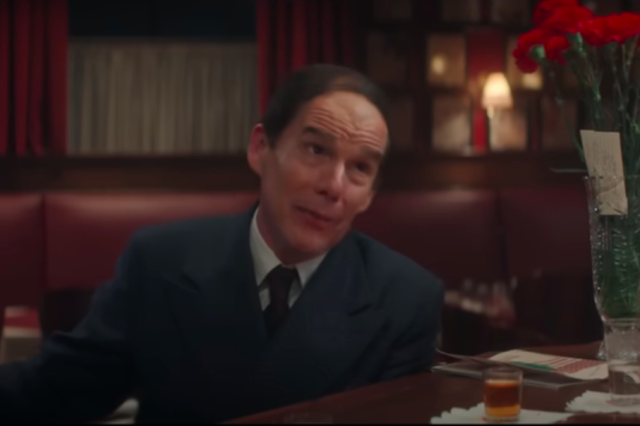
(© Jim Cox)
When was the last time you watched Sleepless In Seattle and said “Gosh, this would be better if Meg Ryan and Tom Hanks were singing original songs?” This new interpretation of a beloved hit movie, currently playing the Pasadena Playhouse, is saddled by a lackluster score and no compelling reason for being adapted.
Arch’s book captures the movie’s charm. The dialogue, much from the film, sounds like real humans speaking. It touches the heart. After any book scene, the audience is invested in the characters. There are even tears when Sam and Annie finally meet.
But the score? It stops the show dead. The melodies by newcomer Ben Toth are bland. Reminiscent of the trite ’80s scores Broadway cranked out during their retrograde period while London was stealing its thunder, these tunes are nondescript. Sam Forman’s trite lyrics add no insight to the characters’ emotions or circumstances, relying instead on rhymes that stick out like a sore thumb. One undistinguishable number, “Out There,” has two reprises. Another number, “Not Like The Movies,” has an intriguing concept revolving around Annie thinking she doesn’t need to be romanced like in films. These lyrics become so literal by quoting scenes from film classics that the song quickly loses its appeal. Also, because the story involves two people who do not meet until the end and are already separated by the distance of a continent, the songs by of the chorus singing about their own dreams only detract from the protagonists.
Schwartz is quite appealing as Annie. Effervescent yet approachable, she has that special charisma in which audiences quickly invest. Her performance warrants a more vibrant show. Gleason is fine as the male protagonist but seems less of a catch than Robert Mammana who plays Walter, Annie’s current fiancé. For the play to work, audiences must love Sam and see him as so perfect for Annie that they can forgive her treatment of Walter, who in the musical seems like the perfect man: tender, thoughtful and intelligent. Because of this, Annie seems like a jerk for leaving him.
Musical theater has made it a habit to convert adored movies into stage musicals. For every hit adaptation of a movie like Hairspray and Nine, there are colossal mistakes like Big, 9 to 5, and Sleepless In Seattle. Creators should ask if music will add a new dimension to an already successful format. Here, the music not only detracts from the enjoyment of the rest of the production; it acts as a vacuum, leaving the show seeming more akin to “Soulless in Seattle.”









